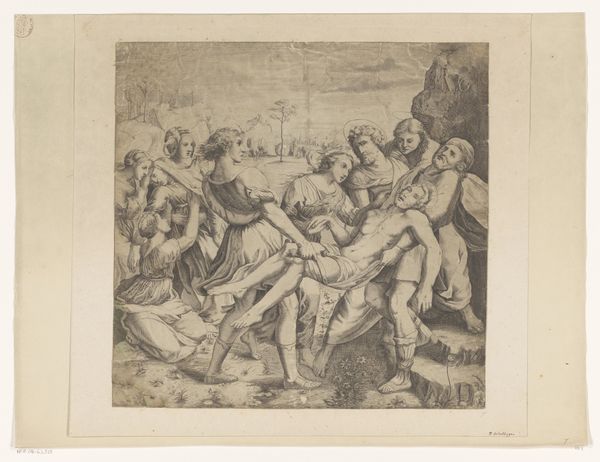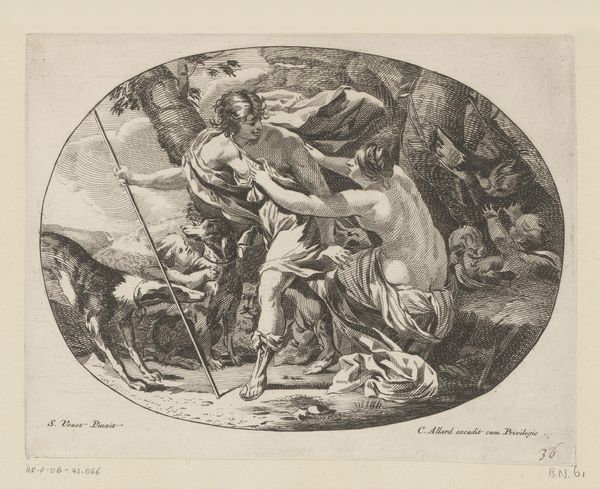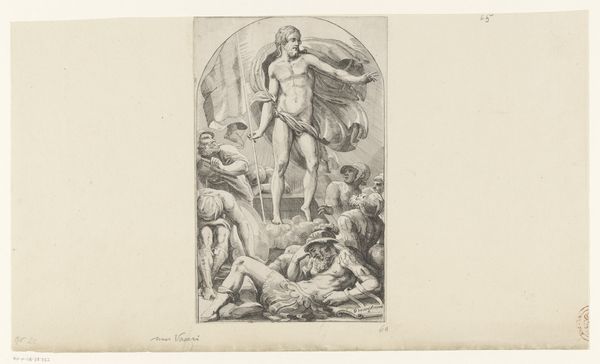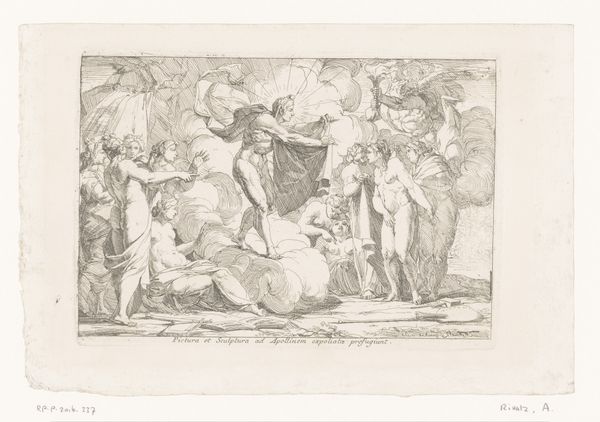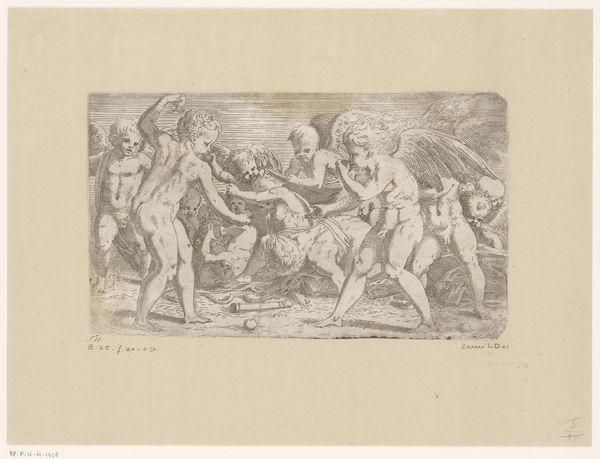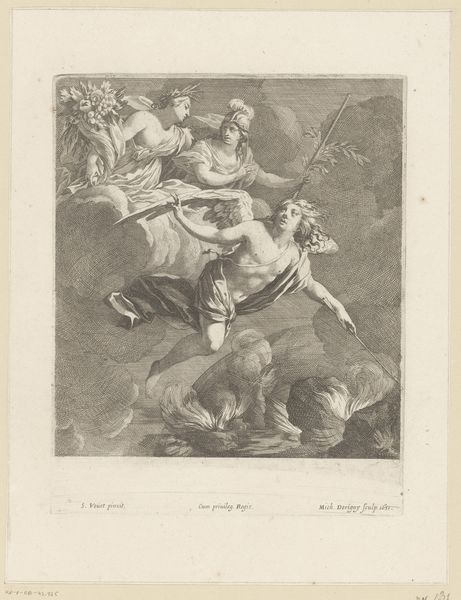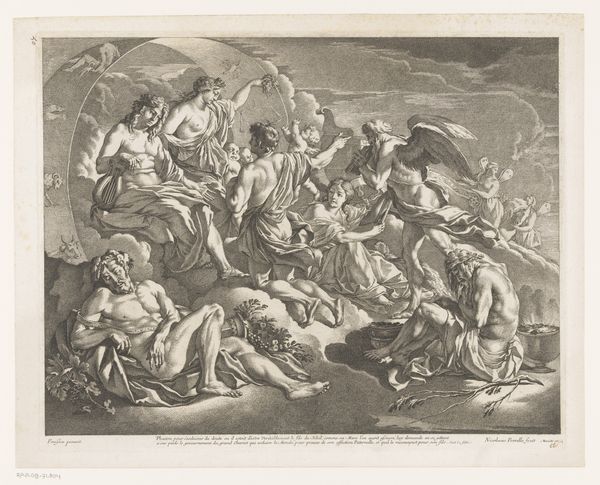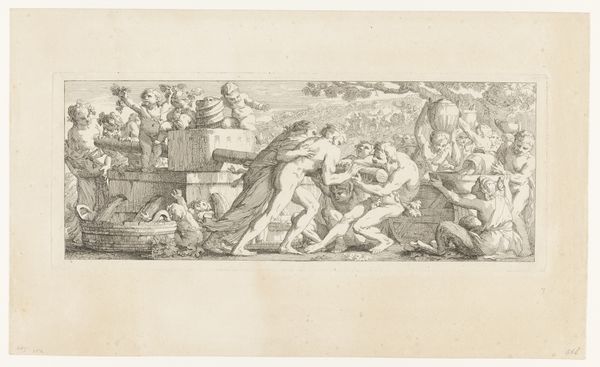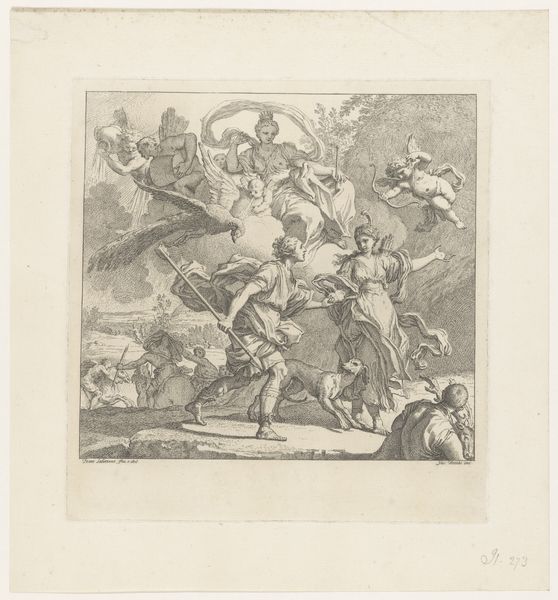
engraving
#
baroque
#
figuration
#
line
#
history-painting
#
engraving
Dimensions: height 161 mm, width 238 mm
Copyright: Rijks Museum: Open Domain
Editor: Here we have Michel Dorigny's 1638 engraving, "Mars en Venus". The composition is fascinating; everything's sort of bursting out of this oval frame, all these bodies and drapes. What do you see in this piece beyond the initial mythological subject matter? Curator: It’s crucial to recognize how Dorigny’s work participates in, and possibly critiques, the prevailing narratives of 17th-century power structures. Look at Venus, seemingly restraining Mars, pulling him back. Could this be interpreted as a visual negotiation of gender roles within a patriarchal society? The idealized figures also reflect very narrow concepts of beauty that actively excluded most people. How does that strike you? Editor: That’s interesting. I hadn’t considered that Venus could be seen as…subversive, almost. But, do you think that was actually Dorigny’s intent? Or is this us, projecting contemporary ideas? Curator: Intent is a slippery concept, isn't it? More important is acknowledging how art like this actively shapes perceptions, reinforcing—or perhaps subtly challenging—social norms. Think about the absence of any sort of racial diversity within such works; it tacitly endorsed white supremacy. And even the overt display of wealth evident in the details of fabric and ornament— who does this privilege? Who does it exclude? Editor: So, we're not just looking at mythology, but the social politics embedded within the artistic representation. That makes me see it completely differently! Thank you! Curator: Exactly. Examining these historical works is crucial to understanding the lineage of contemporary systemic inequalities. It's not just about art history; it's about social justice, too.
Comments
No comments
Be the first to comment and join the conversation on the ultimate creative platform.
